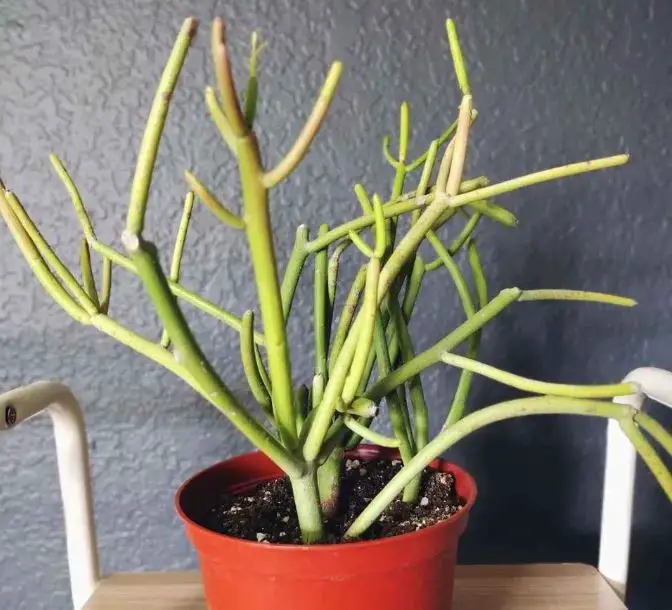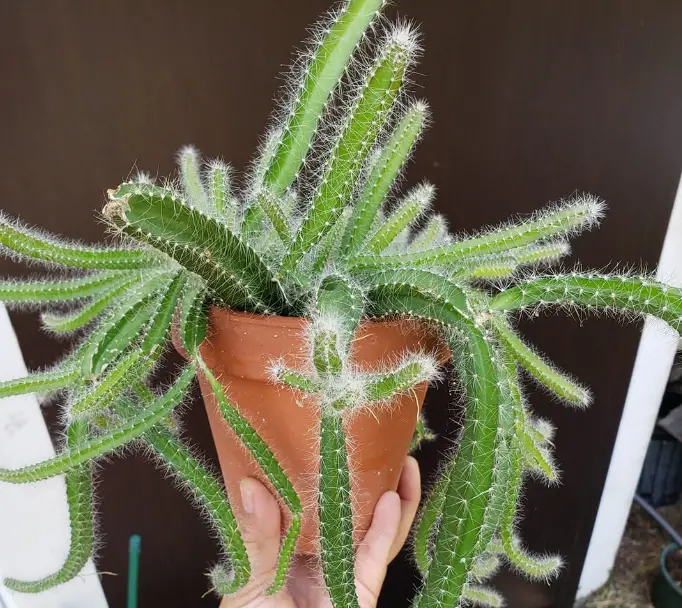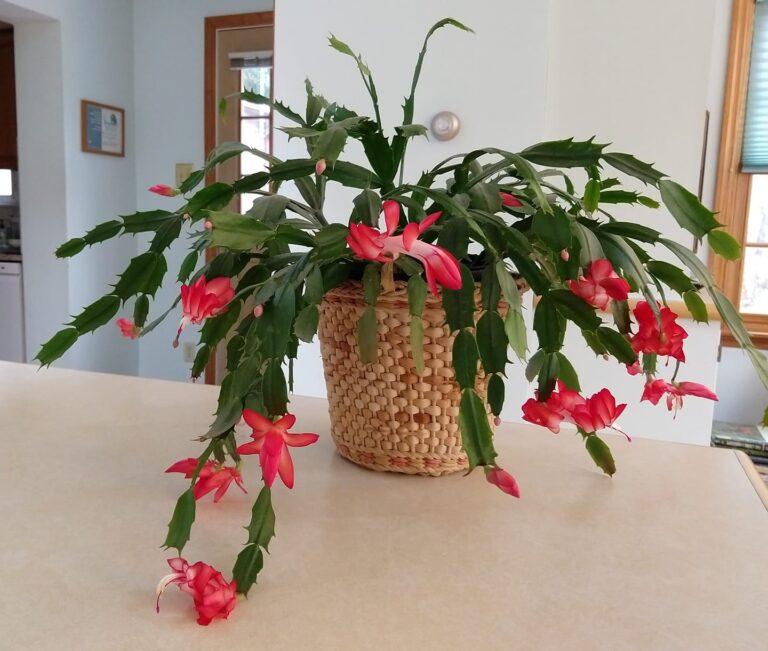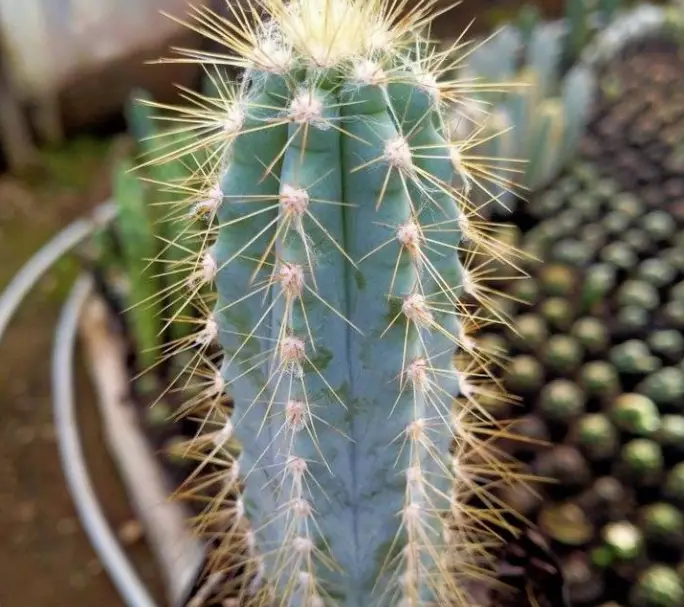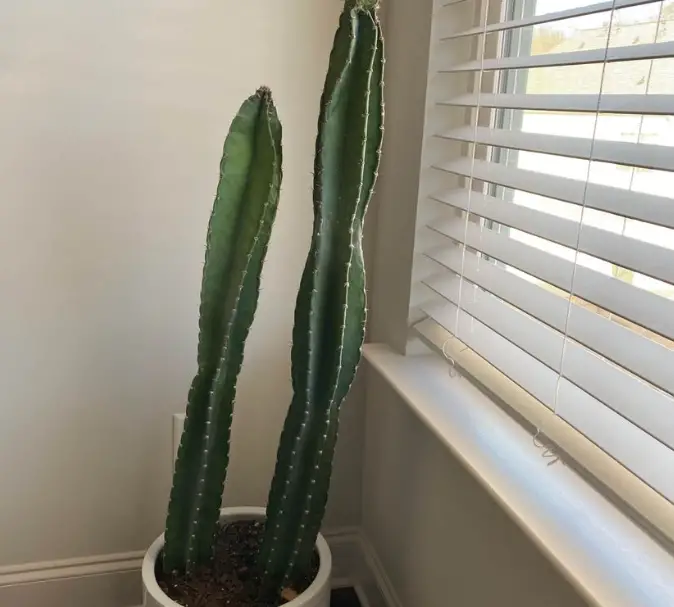Totem Pole Cactus – Care and Propagation Guide
The totem pole cactus (Pachycereus schottii var. monstrosus) also known as the monstrous whisker cactus is a slow-growing cactus native to the desert regions of mainland Mexico, Sonora, and the Baja California peninsula of Mexico where they tend to grow in colonies on rocky hillsides.
It is a spineless variant of the senita cactus (pachycereus schottii) and was previously classified as Lophocereus schottii var. Monstrosus. This columnar cactus has an impactful and dramatic skin texture that makes it popular in landscapes and gardens.
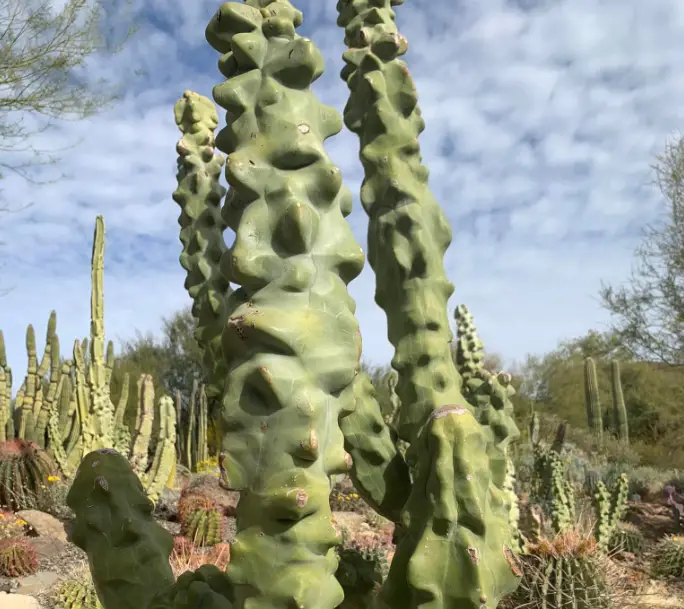
Description and features
The totem pole cactus has bumpy spineless skin and it somehow resembles the boobie cactus. It is usually a small plant 2 to 3 meters tall but it can reach a height of 15 ft and spread to 15 ft wide when grown outdoors. The columnar stems that branch at the base are slim and slightly frosty green in appearance.
This cactus blooms in late spring with pale pink flowers that open at dusk and close up by mid-morning. This is followed by the formation of edible egg-shaped red fruits. However, flowering is uncommon in plants grown indoors.
In summary, here is what to know about the totem pole cactus:
| Common names | Totem pole cactus or monstrous whisker cactus. |
| Botanical name | Pachycereus schottii var. monstrosus |
| Mature size | 10 to 12 ft. (3-4 m.) height. |
| Sun exposure | Full sun |
| Soil type | Sandy, well-draining, acidic to neutral pH. |
| Temperature | Above 70 °F (21 °C) |
| Bloom time | Spring |
| Flower color | Pale pink |
| Hardiness zones | USDA 9 – 11 |
| Toxicity | Not toxic to pets or humans |
How to grow and care for the totem pole cactus
Totem pole cacti are adapted to arid and desert conditions making their care and maintenance very easy. They can grow outdoors year-round in their hardiness zones but gardeners in northern or temperate climates can only grow them as houseplants.
Light requirements
The totem pole cactus needs plenty of direct sunlight to thrive. In fact, it tolerates extreme sun and heat. It should get at least 6 hours of bright direct sunlight every day. A west or south-facing window is a great spot for growing these sun-loving plants.
Without enough light, the totem pole cactus will grow spindly. This can also make it prone to fungal infections that cause rot. If the location where you have grown them is not receiving enough sunlight, you can grow them under grow light.
Watering needs
Like other cacti, the totem pole is prone to root rot when overwatered. The plant must be watered only when the soil is completely dry. In fact, it is better to underwater than overwater it. You may just water it once every 1 or 2 weeks during spring and summer.
During fall and winter, cut back on watering as the cactus enters into dormancy. You can water once per month just to prevent the plant from shriveling. The cool temperatures and less watering make the cactus rest and feel happy.
Temperature and humidity
Totem pole cactus thrives in warm dry conditions. It prefers temperatures above 70 °F (21 °C). In warm climates, the cactus can be grown outdoors year-round. When grown outside their hardiness zones (9-11) the plant should be moved indoors during winter to avoid frost damage.
When grown indoors, this cactus is fine in average room conditions. Keep it away from drafty windows, air vents, and steamy areas like the kitchen and bathrooms. Excess moisture around it can cause rot and the spread of fungal infections.
Potting and repotting
Totem pole cactus has a slower growth rate and it’s not necessary to repot it frequently. You may do it once every two or three years just to replenish the soil nutrients. Repotting should be done during the spring or summer period when the plant is actively growing.
When repotting, use a slightly larger pot than the current one. The pot should have drainage holes. More important, use succulent soil mix from a reputable source. You can also make your own cactus soil by mixing regular potting soil, coarse sand, and pumice.
Fertilization
Pachycereus schottii var. Monstrosus don’t really need fertilization but the cactus can benefit from regular feeding during spring and summer when it’s actively growing. Apply a recommended cactus fertilizer once a month to stimulate more growth and blooming.
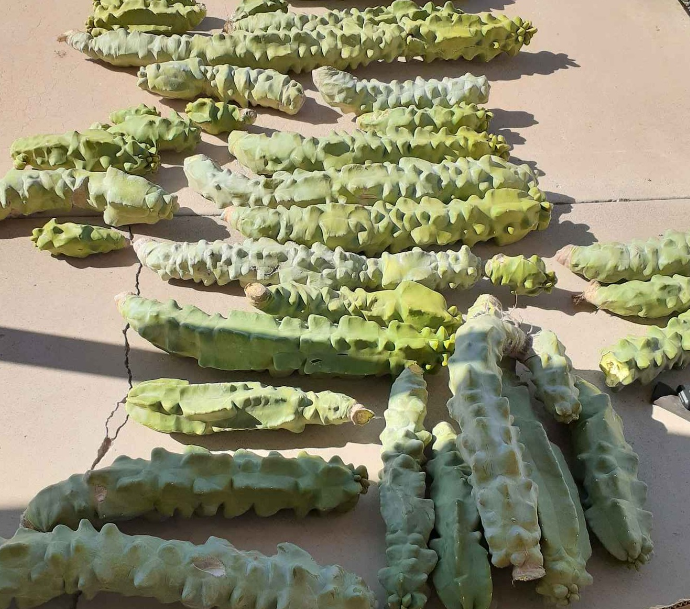
How to propagate totem pole cactus
Totem pole cacti are slow-growing plants that need patience. While they do bloom and bear fruits, their flowers are sterile and won’t produce seeds. The easiest way to grow more plants that you can gift to friends and family or add to your collection is by stem cuttings.
- Using a clean sharp knife, get a cutting from the main plant preferably a branching arm. The cutting should be healthy and about 12 to 14 inches long.
- Place the cutting in a warm dry place for two to three days to dry out. The formation of a callus over the cut end prevents the cutting from fungal infections or rot.
- Prepare a small pot or container with cactus soil and plant the cutting. You can apply a rooting hormone at the base of the cutting before inserting it in the soil.
- Place the potted cutting in a location that received bright direct sunlight and don’t water it for two weeks. Mist the soil when it gets completely dry.
- The cutting will root in 4 to 6 weeks and you can transfer it to your preferred location.
Common pests and diseases
The totem pole cactus is susceptible to root rot when overwatered. The fungal condition may silently kill the plant or stop it from growing. This cactus can also be infested with common succulent pests such as mealybugs, scales, and aphids.
Pests can be identified by the damage they cause to the plant. Heavy infestations may cause stunted growth, black spots on the cactus, yellowing, and shriveling. Some pests like mealybugs secrete a white fluffy substance on the cactus where they hide and breed.
Most insect pests can be controlled by the application of neem oil or insecticidal soap. You can also remove visible pests with a cotton swab dipped in isopropyl alcohol. Hosing them off with a strong strand of water can also work.
The secrete of preventing pests and diseases on your plants is to provide good care and monitor them regularly. New plants should also be investigated thoroughly before adding them to your collection.
Final Thought
The totem pole cactus is slowly growing but with less care and maintenance needs. Due to their eye-catching appearance, they make great plants for any type of garden as long as you meet their basic climatic needs. They love warm dry conditions and plenty of direct sunlight.
Like any other cacti, they are prone to root rot when overwatered or grown in poorly draining soil. When potting or repotting a totem pole cactus, use a well-draining cactus mix and water it less frequently. The cactus is also susceptible to frost damage, therefore bring it indoors when winter sets in.
References
“Sonoran Native Plants,” The University of Arizona
“Managing insects on indoor plants,” University of Minnesota Extension
Urban Landscape Committee. Desert Accent Plants. Arizona Native Plant Society, 1992
My name is Diane M Lewik, and I am the founder of this website. I am a degree holder in plant biology from the University of California – Berkeley. Over the years, I have cultivated a vast collection of succulents and I have learned a great deal about how to grow and care for these unique plants. Feel free to ask any questions in the comment section below.
